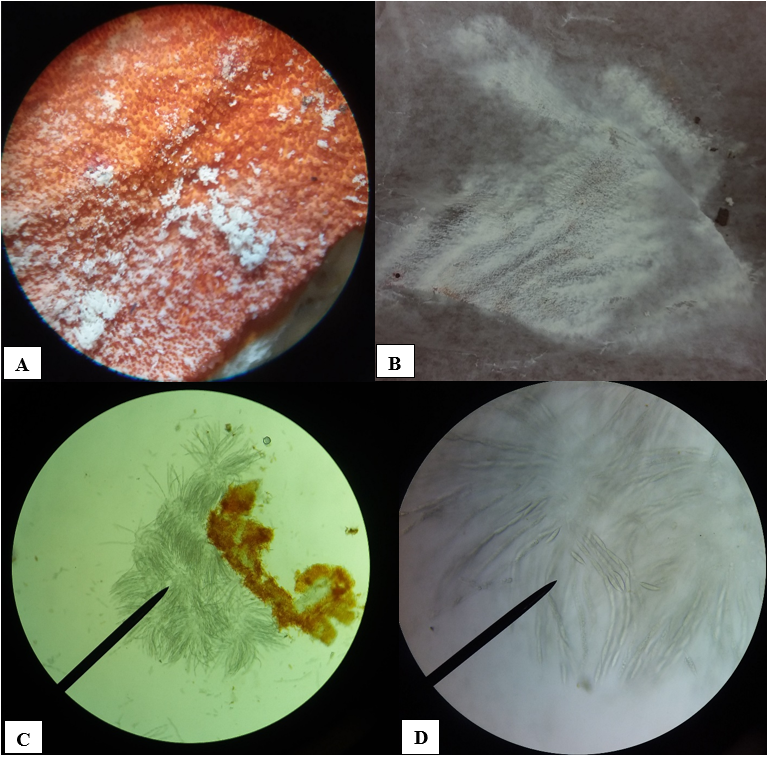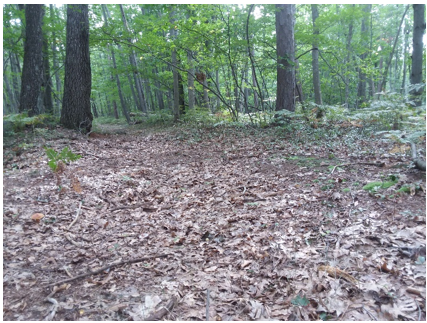Hypomyces lactifluorum
Hypomyces lactifluorum is a mycoparasite on select Lactarius and Russula species growing amidst both conifers and hardwoods and can most often be found in the summer and fall months.

Hypomyces lactifluorum (Schweinitz) Tulasne and C. Tulasne
Ecology and Morphology: Hypomyces lactifluorum is a mycoparasite on select Lactarius and Russula species growing amidst both conifers and hardwoods and can most often be found in the summer and fall months. This fungus will completely cover its host with orange perithecia, giving it a rough, warty appearance and texture. The parasitized mushroom fruiting body, when thoroughly engulfed by this mycoparasite will be firm, fairly hard, and somewhat brittle. Spore deposits from the parasite are white, while the ascospores themselves are hyaline when viewed under a compound microscope. Ascospores are spindle-shaped and measure roughly 35 x 43 x 6-7.5 µm.
Taxonomy:
- Kingdom: Fungi
- Division: Ascomycota
- Class: Sordariomycetes
- Order: Hypocreales
- Family: Hypocreaceae
- Genus: Hypomyces
- Species: H. lactifluorum


References:
- Kuo, M., & Methven, A. S. (2014). Mushrooms of the Midwest. University of Illinois Press.
- Kuo, M. (2003, January). Hypomyces lactifluorum: The lobster mushroom. MushroomExpert.Com.
- Volk, T. (2001). Tom Volk’s Fungus of the Month for August 2001. University of Wisconsin La-Crosse.
- Wood, M., & Stevens, F. (2017). California Fungi—Hypomyces lactifluorum. The Fungi of California.



 Print
Print Email
Email




